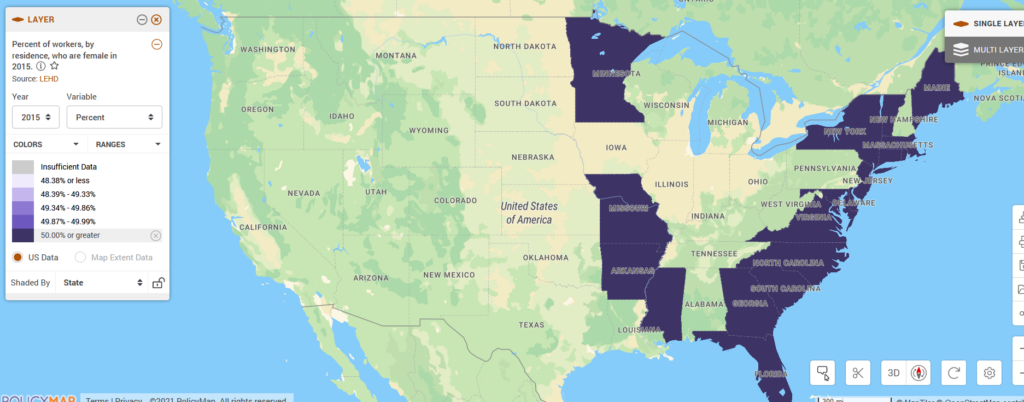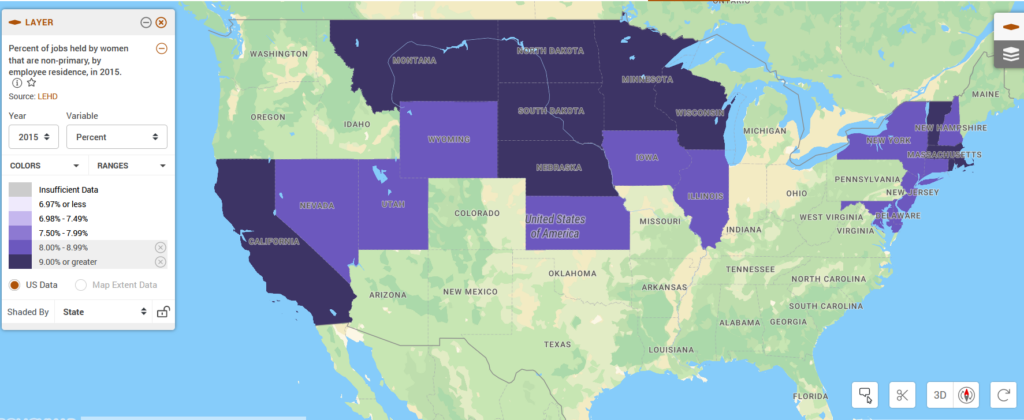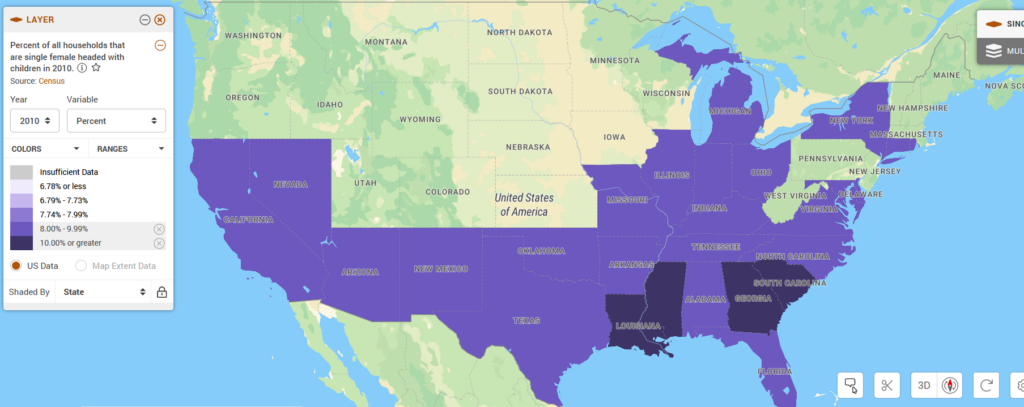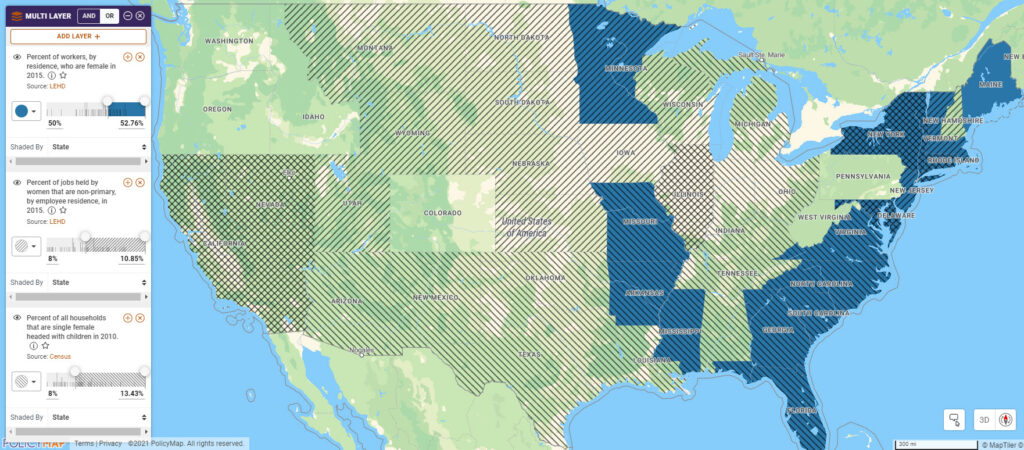The Geography of Working Women

Data
Longitudinal Employer-Household Dynamics (LEHD)
Source
Find on PolicyMap
- Economy
- Workforce Characteristics (By Residence)
- By Demographics
- Workforce Characteristics (By Residence)
On Friday, the Bureau of Labor Statistics released a much-anticipated jobs report, noting that employment in the United States rose by 266,000 in April. Growth was far less than anticipated and, while debate rages about whether additional unemployment benefits have disincentivized a return to work, many agree that circumstances facing women played a major role. The latest jobs data is only available for the nation, but unemployment rates – another key workforce indicator – are available at the state level. A look at the geography of working women and April unemployment rates sheds some light on their relationship.
Women in the Workforce: More than 50% of the workforce in the United States is comprised of women. States with the highest rates of women in the workforce are in purple, below. A return to the workforce means schools and daycare centers need to be consistently open, which is not yet the case. Those institutions that are open are often operating on a hybrid schedule, creating insurmountable work scheduling challenges.

Women Working More than One Job: The percentage of women who held more than one job, pre-pandemic, ranged from about 6% to 11% across states in the nation, according to data from the Longitudinal Employment Household Dynamics. A return to pre-pandemic employment when many women need to find two jobs, not just one, while also dealing with child care issues, makes a return far more challenging.
In the purple states below, more than 8% of working women held more than 1 job prior to the pandemic.

Single Women with Children: It goes without saying that single women with children face a far greater challenge in returning to work if they don’t have a spouse, partner, or other family members they can rely on for help with childcare issues. At least 8% of households in the purple states below are headed by single women with children.

When looking at these indicators in combination, New York and Connecticut stand out as having high rates of working women (shaded in blue on the map), women who worked more than one job (shown with hatch marks on the map), and women who care for their children as single moms (shown with horizontal lines on the map). What else do these two states have in common? As of April, New York and Connecticut also have the two highest unemployment rates in the nation at 8.5% and 8.3% respectively.
While numerous factors drive a state’s unemployment rate, the unemployment rate for women is higher than it is for men so states with a greater reliance on women in the workforce will face higher overall unemployment rates. Public policy designed to help women return to work seems essential should the nation wish to return to employment levels of the past.
